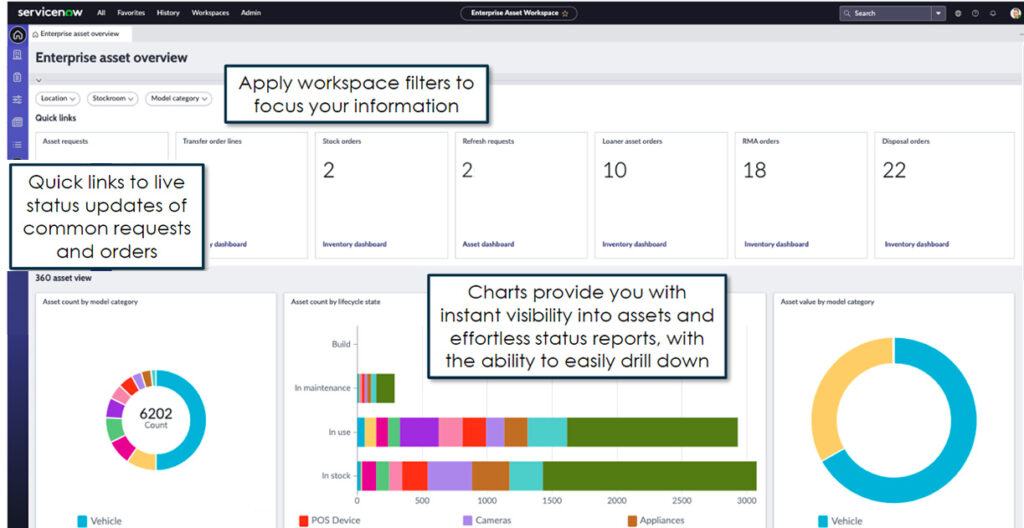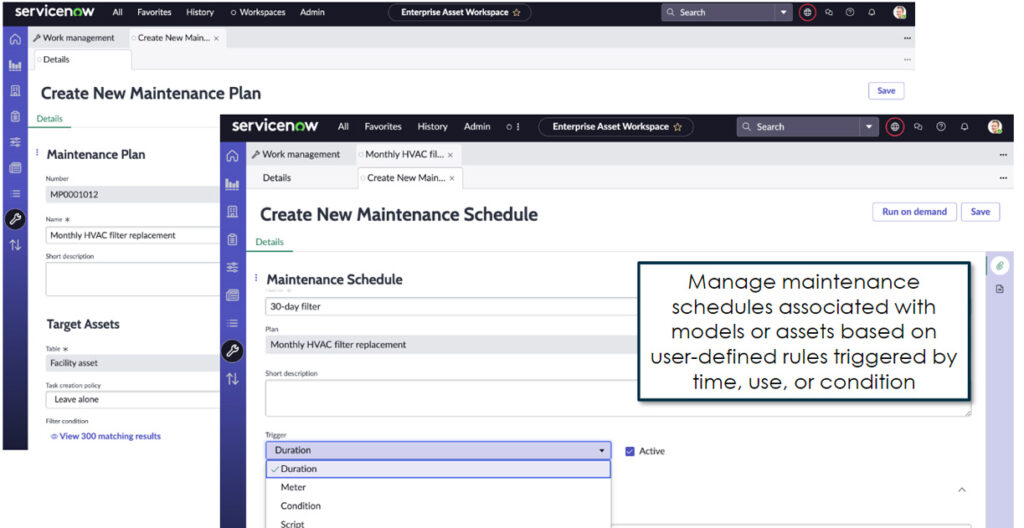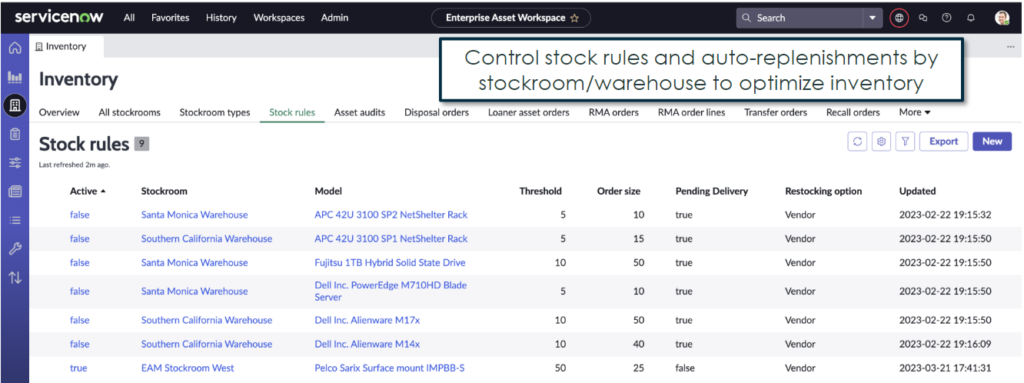Enterprise Asset Management (EAM) refers to the holistic management of an organization’s physical assets—from premises and facilities to vehicles, equipment, machinery, furniture, and fittings. EAM encompasses a range of tasks including procurement, maintenance, repairs, and disposal. Effective management of enterprise assets is crucial for organizations seeking operational efficiency, cost control, and sustainable growth. However, businesses face numerous challenges in their EAM practices that hinder regular operations and cause a lot of inconveniences.
Some Of the Key Challenges Businesses Face in Managing Their Enterprise Assets
- Aging Infrastructure and Maintenance Difficulties: As assets become older, they are prone to breakdowns. Factors such as the unavailability of spare parts and the expiry of vendor support make the maintenance of outdated equipment a challenge. Enterprises struggle with increased maintenance costs, decreased reliability, and regular downtimes.
- Data Silos: When the vast amounts of data generated by assets throughout their lifecycles reside in isolated systems, it becomes difficult for businesses to gain a holistic view of asset performance, maintenance history, and costs.
- Regulatory Compliance and Associated Risks: Compliance with industry regulations and managing associated risks is critical for businesses in asset-intensive atmospheres. Failure to comply with regulations can cause severe financial penalties, compromised safety, and even reputational damage.
- Lack of Asset Visibility and Tracking: Maintaining visibility and tracking assets is a common challenge faced by businesses, particularly those with geographically dispersed operations or extensive asset portfolios. This lack of visibility can lead to underutilization of assets, misplaced assets, and inefficient inventory management.
- Inefficient Workflows and Collaboration: EAM often involves multiple stakeholders such as maintenance teams, operations personnel, procurement department staff, and external service providers. The lack of efficient workflow management and collaboration can lead to communication gaps and delays, resulting in reduced productivity and increased downtime.
Overcoming the Enterprise Asset Management Challenges with Advanced EAM Solutions
According to a recent study by Grand View Research, the global market for Enterprise Asset Management is forecasted to reach $11.33bn by 2025 with a CAGR of 10.2%.
The recent technology advancements are driving the need for organizations to increasingly implement automated solutions that efficiently address numerous EAM challenges. New-age EAM solutions powered by smart technologies such as data analytics & AI offer businesses a strategic advantage, propelling their establishment towards optimal efficiency, effective risk mitigation, and maximized asset utilization.
ServiceNow Enterprise Asset Management (EAM) - Its Modules & Positive Outcomes
ServiceNow Enterprise Asset Management is a comprehensive solution to automate the end-to-end lifecycle of physical business assets. It provides organizations with a detailed view of their asset data on a single platform, enabling them to easily track and make informed decisions that improve asset utilization. With ServiceNow’s scalable and configurable EAM system, organizations can avoid expensive system upgrades while customizing the solution to their specific requirements. This all-in-one cloud platform simplifies asset tracking, financial management, and change management, providing a single system of record for complete traceability. Its mobile readiness empowers users to effortlessly manage assets, perform tasks, and check inventory on-the-go, enhancing productivity and efficiency.
The ServiceNow Enterprise Asset Management (EAM) comprises three modules that cater to different needs and handle various challenges of enterprise asset management efficiently and deliver key positive business outcomes:
1. Enterprise Asset Lifecycle Management
The ServiceNow Asset Lifecycle Management module provides a holistic view of diverse asset estates, meticulously categorized by class, type, age, and industry. This enriched visibility equips organizations to devise strategic plans based on crucial asset financial data, encompassing costs, salvage values, depreciation, and spending reports.
The solution’s intuitive overview dashboard allows businesses to effortlessly navigate complex asset relationships and multi-component data structures. The platform facilitates proactive monitoring of open items for prompt remediation of issues at various stages of the asset lifecycle.
The solution also evaluates asset risk levels and generates color-coded heatmaps to prioritize future tasks. This data-driven approach facilitates informed decision-making, efficient resource allocation, and resilient operations.

2. Enterprise Asset Maintenance Management
According to a recent asset management survey conducted by ServiceNow, around 65% of maintenance teams stressed that their main challenges lie in streamlining maintenance plans and contingency management.
With features like work order management, preventive maintenance, condition monitoring, risk configuration & scoring, and maintenance analytics, the module helps create structured maintenance plans by assessing risk profiles of assets and alerts the stakeholders about any anomalies in asset performance.
It also enables maintenance teams to initiate and assign work orders, ensuring smooth collaboration between the teams involved.
This module, integrated with ServiceNow EAM’s broader Asset Lifecycle Management, contributes to maximizing the value of assets and optimizing maintenance expenses.

3. Enterprise Asset Inventory Management
The Enterprise Asset Inventory Management module offers a complete solution for businesses to manage their asset inventory through a workflow-driven approach. ServiceNow EAM’s unified workspace along with the Asset Inventory Management module offers a centralized view of all assets – their locations, status, and other parameters. This is particularly useful when businesses have assets spread across geographically distant units and premises. The module helps generate an enterprise asset catalog which simplifies the process of requesting items. It streamlines inventory stock orders, disposal orders, asset refresh planning, and other important inventory management workflows by automatically reconciling asset location with the information as per inventory records.

Building a Robust Asset Management Foundation with ServiceNow EAM
Enterprises that want to proficiently manage their business assets for complete visibility at scale rely on data-driven decision-making to achieve success in the long run. They don’t let their assets become a liability! Join the fraternity by leveraging the power of ServiceNow to optimize, streamline, and elevate your asset management processes. ServiceNow EAM creates value through its diverse use cases for businesses across industries including banking & financial services, healthcare, and manufacturing.
KANINI is a ServiceNow Premier Partner, enabling businesses to explore new opportunities for success with ServiceNow EAM. Our technology expertise, deep industry-specific knowledge, and years of experience help us identify and address the key pain points through customized solutions. Connect with our experts to schedule a demo and start your ServiceNow journey.
Author

Ravi Rajamani
Ravi is the ServiceNow Practice Lead at KANINI. He brings close to 18 years of experience in the IT industry and has strong program & project management skills spanning ServiceNow, Resource Management, Solution Design, and Service Delivery. He has a proven track record of helping enterprise customers leverage ServiceNow platform efficiently.








